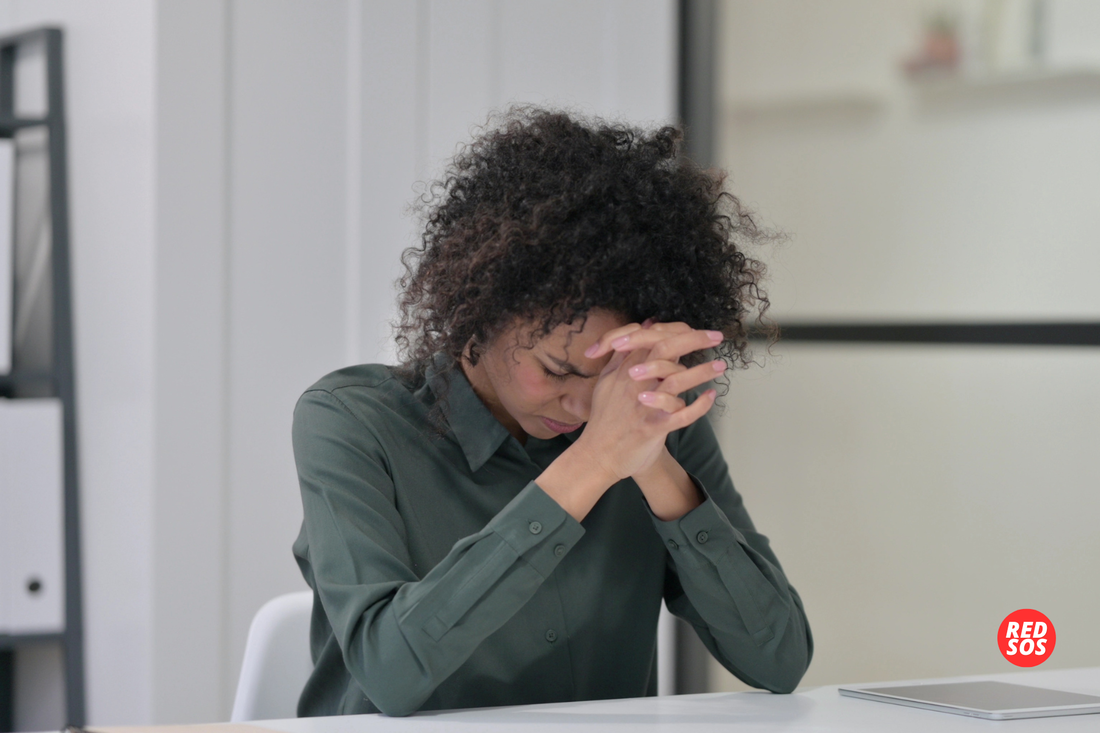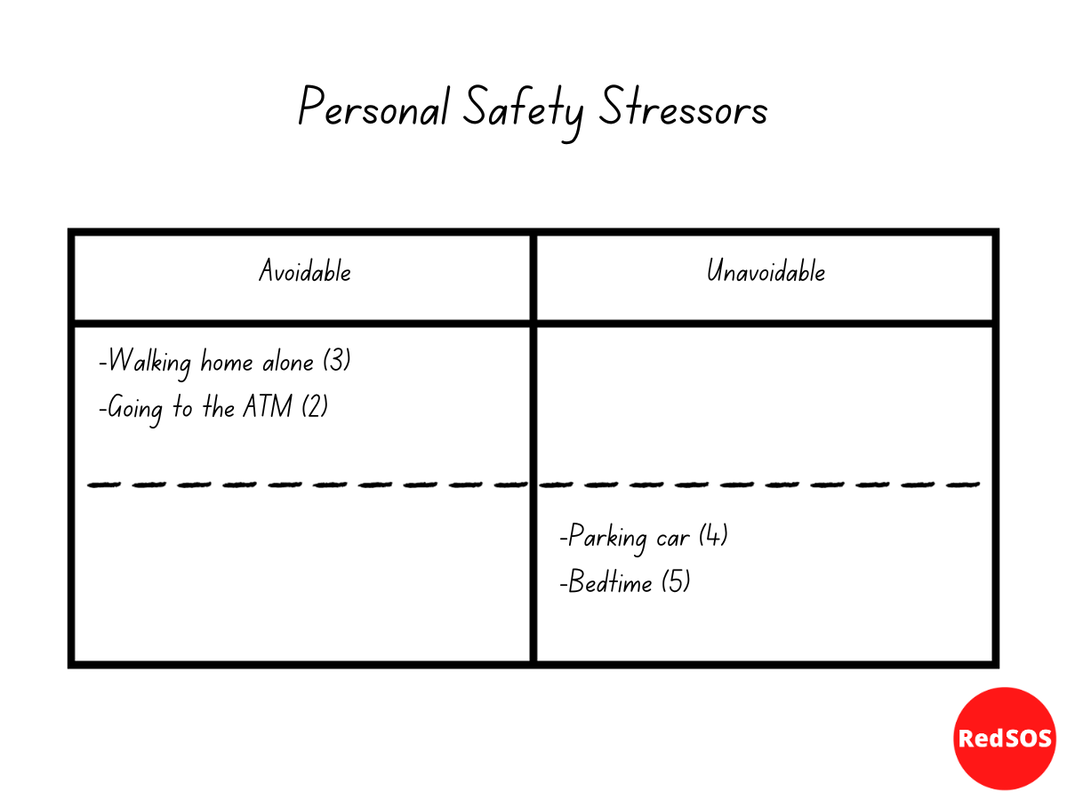|
In a recent survey, we learned that over 60% of Americans feel unsafe on a daily basis. Many feel varying forms of strong anxiety related to keeping themselves or their families safe. Yet, why do we feel such anxieties? Understanding where this so-called safety anxiety comes from and how to address it can be tremendously beneficial. Where does safety anxiety come from? Our bodies naturally release certain chemicals and create certain emotions to help us. We feel fear or anxiety in certain situations in order to stay alive. It’s generally a good thing. But constant exposure to anxiety-inducing situations can take a toll on the body and mind, and a significant one. Chronic stress and high levels of cortisol have been shown to cause harmful side effects. How to Address Your Personal Safety Anxiety The good news is that personal safety anxiety can be addressed, like other forms of anxiety, and we're going to look at how to do exactly that in these two short parts: PART 1: Awareness & Logging Personal Safety Stressors As you go through your daily life, you will experience times of heightened personal safety anxiety. You may not have thought about it this way before or noticed it before—or you may have. This will be an opportunity to become hyper-aware of situations that raise your personal safety anxiety. We call these personal safety “stressors.” You may feel these stressors when you do something like walk to a bus stop at night alone or take an elevator by yourself. Your body sends a signal out to let you know to be heightened. As Maslow’s hierarchy of needs demonstrated, one of our most basic human needs is physical safety. Without feeling physically safe, we cannot thrive. To address your personal safety anxiety, you must first note and identify any event throughout the day that heightens your “safety anxiety.” Secondly, you must log these events and assign a value from 1-5. A simple way to log these events is to text yourself, or email yourself on your smartphone. This allows you to log the events without having to carry a notebook. Be sure to pay particular attention to the level of severity, because understanding where the anxiety falls on the 1-5 scale will be important in the next step. Do this for 7 days, beginning Monday-Sunday. Even though many people experience the majority of personal safety stressors during the work week, it’s good to continue to log during your days off because you may be experiencing some surprising personal safety stressors. For example, some people who live alone might experience personal safety stressors at home, when hearing the house walls adjust at night. For this reason, it’s a good idea to keep the log for 7 days straight. PART 2: Addressing Personal Safety Stressors Now that you’ve logged your “personal safety stressors,” you may have gained some valuable insights into your day and which events might heighten personal safety anxiety. As we’ve discussed, chronic states of anxiety can take a toll on the body, so we’ll want to eliminate those stressors. The next step will be separating your personal safety stressors into two categories: avoidable and unavoidable. Avoidable personal safety stressors are the ones that you can cut out of your day, if you can help it. For example, if walking through a particular street is a stressor, you can opt for a different route. Conversely, unavoidable stressors are ones that you have no control over and cannot change. For example, walking through your parking garage at work. Maybe there’s only one garage you must use every day, and it’s difficult to switch to a different one. This would be a non-avoidable personal safety stressor. The third step in this process will be to further divide each category into two subcategories: 1-3 rated stressors, and 4-5 rated stressors. Your list should look something like this: As you can see in the examples, certain personal safety stressors are avoidable, while others are not. Because you’ve logged these events for the week, you may now have some clarity and understanding into which avoidable situations give you stress, and you can avoid them! While this may sound simple, sometimes, we must intentionally give something awareness to understand it (and possibly avoid it). Non-similarly, some other personal safety stressors were non-avoidable. These are perhaps the most important to address because these will require the most work. Understanding these unavoidable personal safety stressors is a great first step! Just being aware of which activities heighten your stress is a great start, because sometimes awareness alone brings down our stress level. Now take each one of your non-avoidable personal safety stressors and write down a potential solution for each one. Some solutions may include bringing a friend, using a personal safety app like RedSOS, or another alternative that you feel comfortable with. Let’s look at a typical stressor: walking home alone. If you have friends or family available at the time you walk home, it’s easy to invite someone to join you. In this case, it’s an avoidable personal safety stressor. If, however, your schedule doesn’t allow you to bring someone, it’s a non-avoidable personal safety stressor. In this case, using a personal safety app like RedSOS can be very helpful because it may feel like you’re not alone anymore. RedSOS provides 24/7 professional agents that are available to get you help if needed. Just knowing there’s someone on standby can be a tremendous help. The app also allows you to request a call so our agents can check on you, even if it’s not an emergency. So if you are walking alone and feeling anxious, you can get in touch with a caring human who’s capable of summoning first responders at any moment. If you have a specific personal safety stressor and want to get our advice on how to eliminate this stressor from your life, you can reach out to [email protected] or call 1-877-832-5276. We will be happy to assist you. We care about your safety and love to help! |
HelloWelcome to our blog. Popular Articles
How to Overcome Anxiety about your Safety How to Stay Safe while Jogging - 3 Smart Strategies for Solo Runs What to Do When 911 Is Down: Creating a Safety Plan That Could Save Your Life 3 Simple Ways to Maximize your Personal Safety when walking your dog RedSOS App's TEST Feature: A Lifeline for Personal Safety and Peace of Mind The Crucial Link Between Personal Safety and Well-Being: Insights from Maslow's Hierarchy Gifting Personal Safety and Self-Defense: The Gift of Empowerment Archives
April 2024
Categories |
|
RedSOS is a personal safety application that operates using cellular or WiFi data. Results not guaranteed. RedSOS is not guaranteed to help in an emergency.
|
All Rights Reserved © 2024 RedSOS.com
|




 RSS Feed
RSS Feed